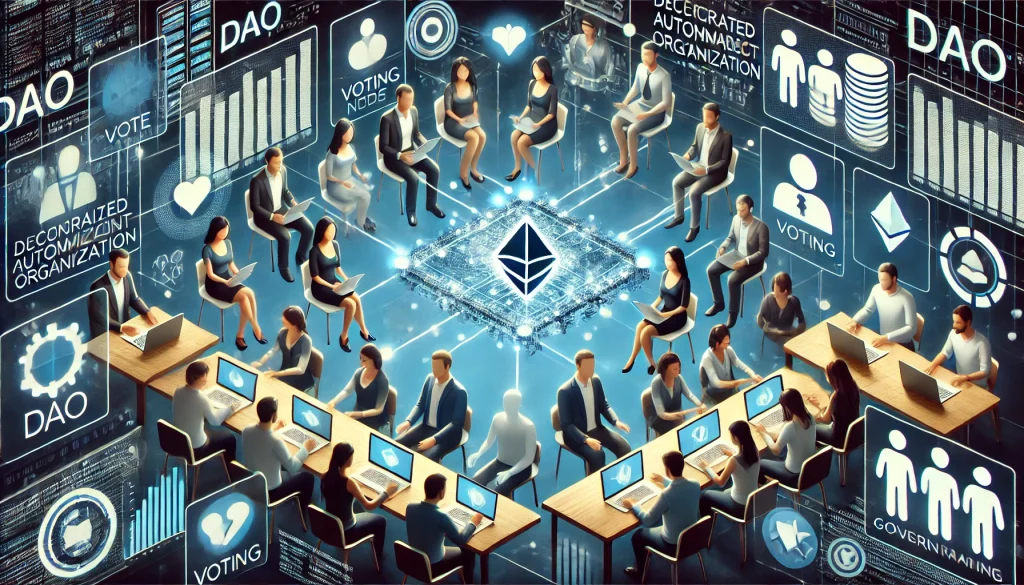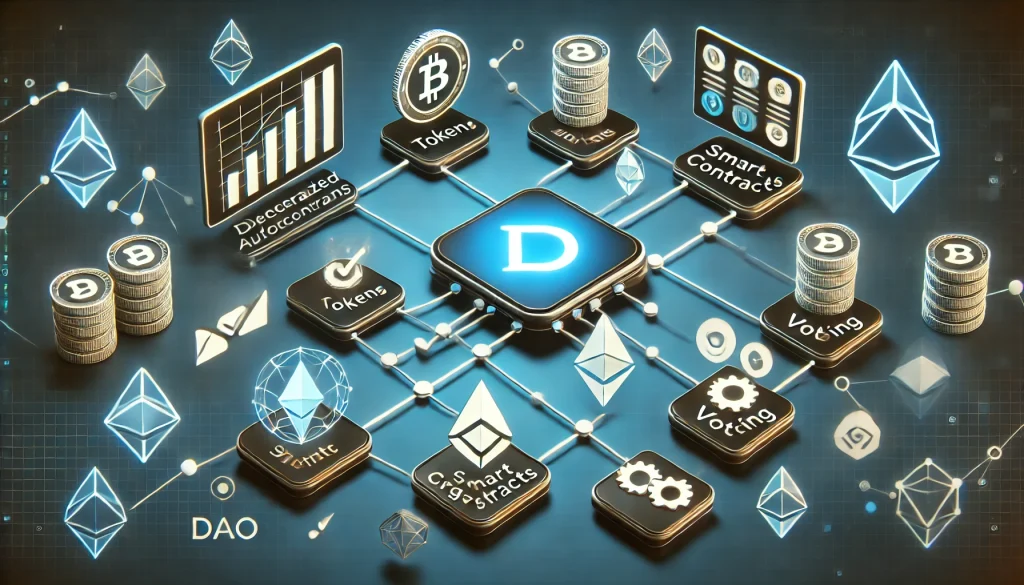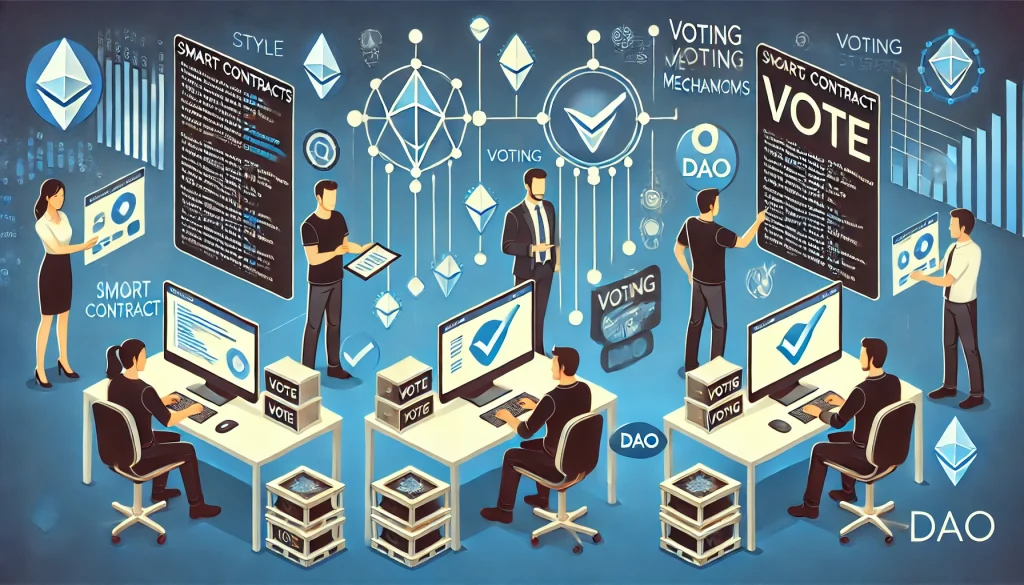
In the world of blockchain and cryptocurrency, Decentralized Autonomous Organizations (DAOs) represent a revolutionary approach to governance, enabling transparent and community-driven decision-making. DAOs are not only changing the way industries operate but also empowering individuals to collaborate more efficiently without the need for centralized control. Whether you’re a developer, a blockchain enthusiast, or someone simply looking to innovate in cryptocurrency management, creating a DAO is a skill worth mastering.
In this guide, you’ll discover how to set up your own DAO, manage it effectively, and take advantage of its decentralized features. We’ll walk you through the necessary tools, step-by-step instructions, and best practices to make sure your project succeeds.
Materials or Tools Needed
Before diving into creating your DAO, it’s essential to have the right tools and resources at your disposal:
- Blockchain Platform: Ethereum, Polkadot, or another smart contract platform.
- Smart Contracts: Basic knowledge and access to smart contract development tools.
- Cryptocurrency: Funds to establish the DAO and facilitate transactions.
- Development Team: If you’re not a developer, you’ll need access to blockchain developers who can write and manage smart contracts.
- DAO Management Software: Platforms like Aragon, DAOstack, and Colony.
Step-by-Step Instructions

Step 1: Define Your DAO’s Purpose and Structure
The first step in creating a DAO is to establish its purpose. Will your DAO manage funds, govern a community, or facilitate decentralized projects? Defining a clear objective will guide the structure of your organization and help with the development of smart contracts. In this phase, it’s important to decide on the governance model—whether it will be a flat structure or have tiers of membership. Write the initial mission statement, so everyone involved understands the goals of the DAO.
Step 2: Choose the Right Blockchain Platform
Once your DAO’s purpose is clear, you need to choose a blockchain to host your organization. The most popular blockchain for DAOs is Ethereum due to its widespread use and compatibility with smart contracts. Alternatively, Polkadot, Solana, and Binance Smart Chain are also great options. Consider the blockchain’s scalability, security, and costs associated with transactions before making a choice. After you pick the platform, deploy a basic smart contract to establish the core functionality of your DAO.
Step 3: Write and Deploy Smart Contracts
Smart contracts form the backbone of any DAO. They automate decision-making processes, voting, and fund allocation. If you’re a developer, you’ll want to focus on writing code that is efficient and secure. For non-developers, platforms like Aragon offer templates for creating smart contracts without heavy coding. Test the smart contracts in a secure environment, ensuring there are no vulnerabilities. Deploy them to the chosen blockchain and integrate with your DAO’s governance model.
Step 4: Create Governance Tokens
Governance tokens allow DAO members to vote on decisions and allocate resources. These tokens are distributed based on the rules you set within the smart contract. The tokens act as shares of the DAO, giving holders the ability to participate in governance. Once created, issue the tokens to early adopters, members, or contributors. Make sure the tokenomics, or the distribution of tokens, aligns with your organization’s long-term goals.
Step 5: Establish Voting Mechanisms and Decision-Making Rules
For your DAO to function properly, you need to implement clear voting mechanisms. Whether through majority rule, quadratic voting, or delegated voting, ensure that your DAO’s governance structure is transparent and fair. Voting mechanisms should be embedded into the smart contracts to automate decisions. Popular frameworks like DAOstack and Snapshot offer ready-made solutions for this. Decisions can be as simple as yes/no votes or more complex weighted votes based on governance tokens held.
Step 6: Launch and Promote Your DAO
Now that your DAO is set up, the final step is launching it to your community or the public. Announce the launch across relevant forums, social media channels, and blockchain communities. Engaging early adopters and developers is key to gaining momentum. You can offer incentives, such as token rewards or participation in governance decisions, to attract members. Ensure transparency in all operations, and update your community regularly.
Do’s and Don’ts

Do’s:
- Establish Clear Governance Rules: Before launching, create explicit guidelines around governance and voting procedures.
- Use Audited Smart Contracts: Ensure your smart contracts have undergone rigorous testing and security audits to avoid bugs or exploitation.
- Engage Your Community: DAOs thrive on active participation. Keep your members involved in key decisions through regular voting opportunities.
Don’ts:
- Don’t Overcomplicate Voting Processes: Simple, clear voting mechanisms will encourage participation. Avoid making governance too technical or difficult to access.
- Don’t Neglect Transparency: Transparency is crucial to building trust within your DAO. Make sure all governance decisions and funds are visible to the community.
- Don’t Forget About Legal Compliance: Depending on your location, DAOs may still need to comply with regulatory requirements. Research the laws related to decentralized organizations in your jurisdiction.
Conclusion
Creating a Decentralized Autonomous Organization (DAO) in the cryptocurrency space is both a challenging and rewarding process. By following the steps outlined above, you can successfully set up that fosters community-driven decision-making and operates transparently on the blockchain. Whether you’re managing a fund, launching a new cryptocurrency project, or building a decentralized app, DAOs provide the perfect infrastructure for decentralized governance. Get started today and experience the benefits of decentralization!
FAQ
What is a DAO, and how does it work?
A DAO is a decentralized organization governed by smart contracts and voting mechanisms on the blockchain. It allows members to vote on decisions and allocate resources without the need for centralized leadership.
How much does it cost to create a DAO?
The cost varies depending on the blockchain you choose and the complexity of your smart contracts. On average, deploying a DAO on Ethereum could cost anywhere from $500 to several thousand dollars in gas fees.
Can anyone join a DAO?
Most DAOs are open to anyone willing to buy or earn governance tokens. However, some DAOs may have specific membership requirements or gated access based on the project’s goals.
Resources
- Bitbond. How to Create a DAO.
- CoinMarketCap Academy. How to Create a DAO.
- Coin Tribune. How to Create a DAO: The 2024 Guide.
- Moralis Academy. Beginner’s Guide: How to Create a DAO.
- PixelPlex. How to Create a DAO.
